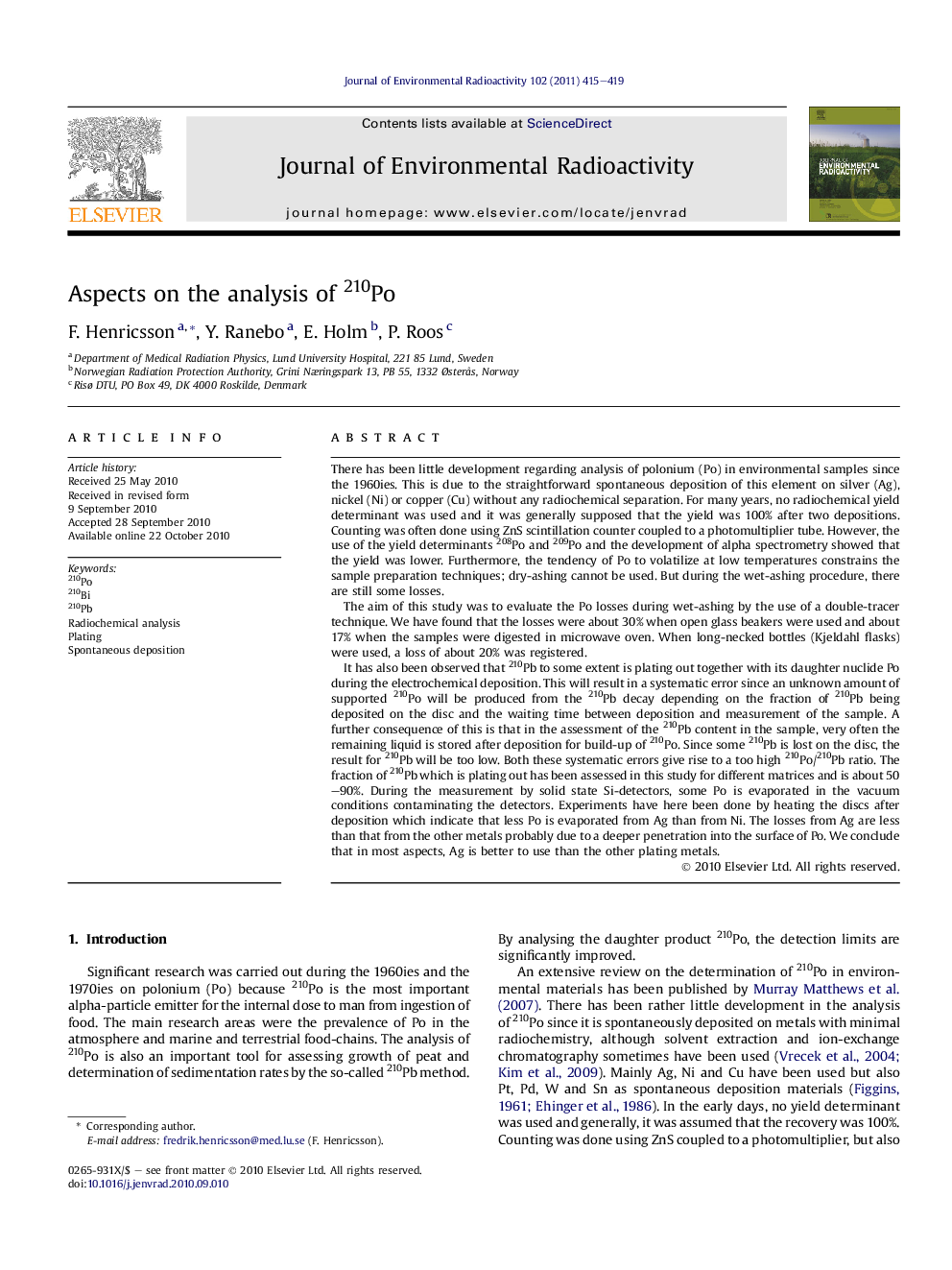| کد مقاله | کد نشریه | سال انتشار | مقاله انگلیسی | نسخه تمام متن |
|---|---|---|---|---|
| 1738724 | 1016810 | 2011 | 5 صفحه PDF | دانلود رایگان |

There has been little development regarding analysis of polonium (Po) in environmental samples since the 1960ies. This is due to the straightforward spontaneous deposition of this element on silver (Ag), nickel (Ni) or copper (Cu) without any radiochemical separation. For many years, no radiochemical yield determinant was used and it was generally supposed that the yield was 100% after two depositions. Counting was often done using ZnS scintillation counter coupled to a photomultiplier tube. However, the use of the yield determinants 208Po and 209Po and the development of alpha spectrometry showed that the yield was lower. Furthermore, the tendency of Po to volatilize at low temperatures constrains the sample preparation techniques; dry-ashing cannot be used. But during the wet-ashing procedure, there are still some losses.The aim of this study was to evaluate the Po losses during wet-ashing by the use of a double-tracer technique. We have found that the losses were about 30% when open glass beakers were used and about 17% when the samples were digested in microwave oven. When long-necked bottles (Kjeldahl flasks) were used, a loss of about 20% was registered.It has also been observed that 210Pb to some extent is plating out together with its daughter nuclide Po during the electrochemical deposition. This will result in a systematic error since an unknown amount of supported 210Po will be produced from the 210Pb decay depending on the fraction of 210Pb being deposited on the disc and the waiting time between deposition and measurement of the sample. A further consequence of this is that in the assessment of the 210Pb content in the sample, very often the remaining liquid is stored after deposition for build-up of 210Po. Since some 210Pb is lost on the disc, the result for 210Pb will be too low. Both these systematic errors give rise to a too high 210Po/210Pb ratio. The fraction of 210Pb which is plating out has been assessed in this study for different matrices and is about 50–90%. During the measurement by solid state Si-detectors, some Po is evaporated in the vacuum conditions contaminating the detectors. Experiments have here been done by heating the discs after deposition which indicate that less Po is evaporated from Ag than from Ni. The losses from Ag are less than that from the other metals probably due to a deeper penetration into the surface of Po. We conclude that in most aspects, Ag is better to use than the other plating metals.
Journal: Journal of Environmental Radioactivity - Volume 102, Issue 5, May 2011, Pages 415–419